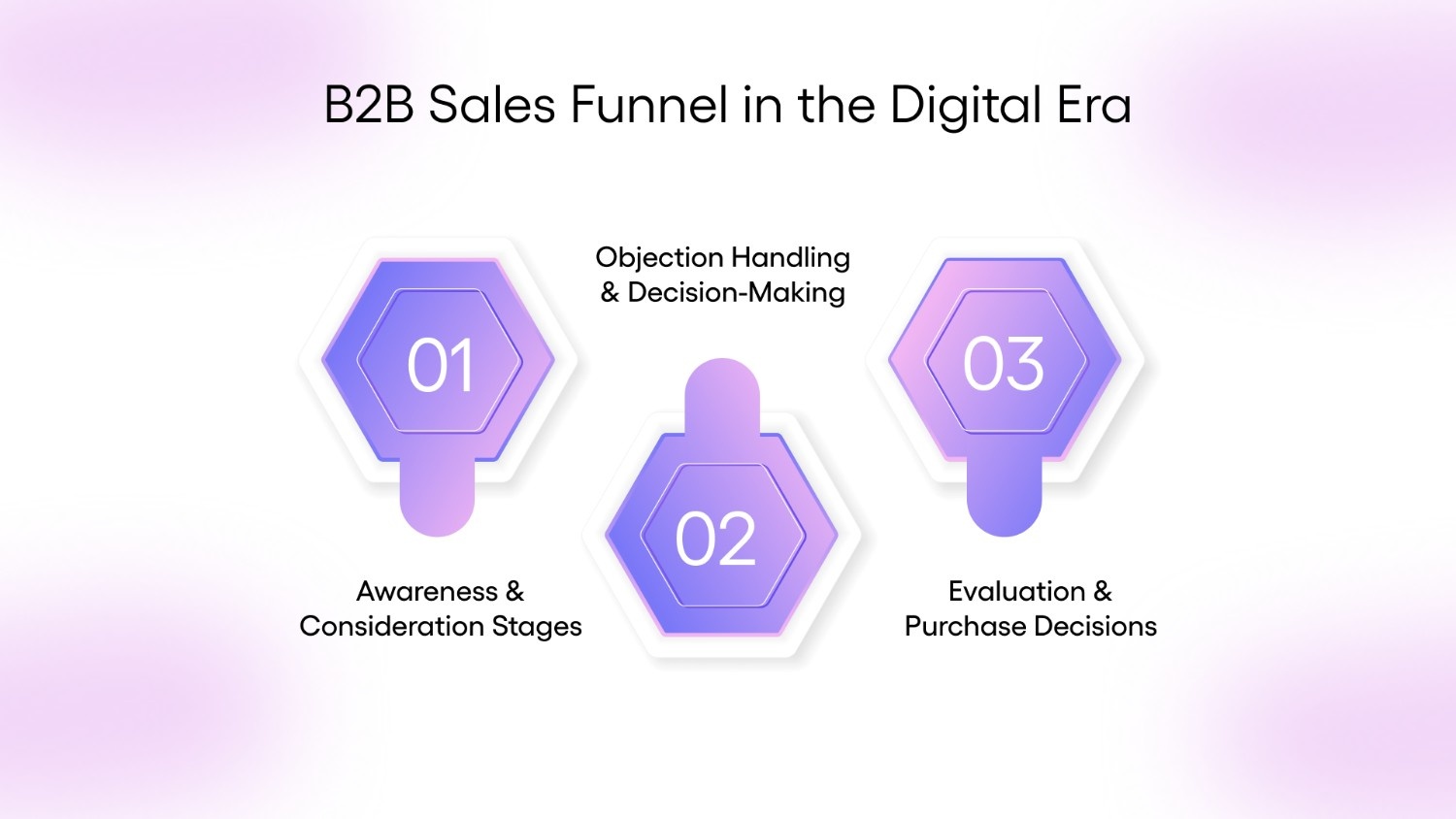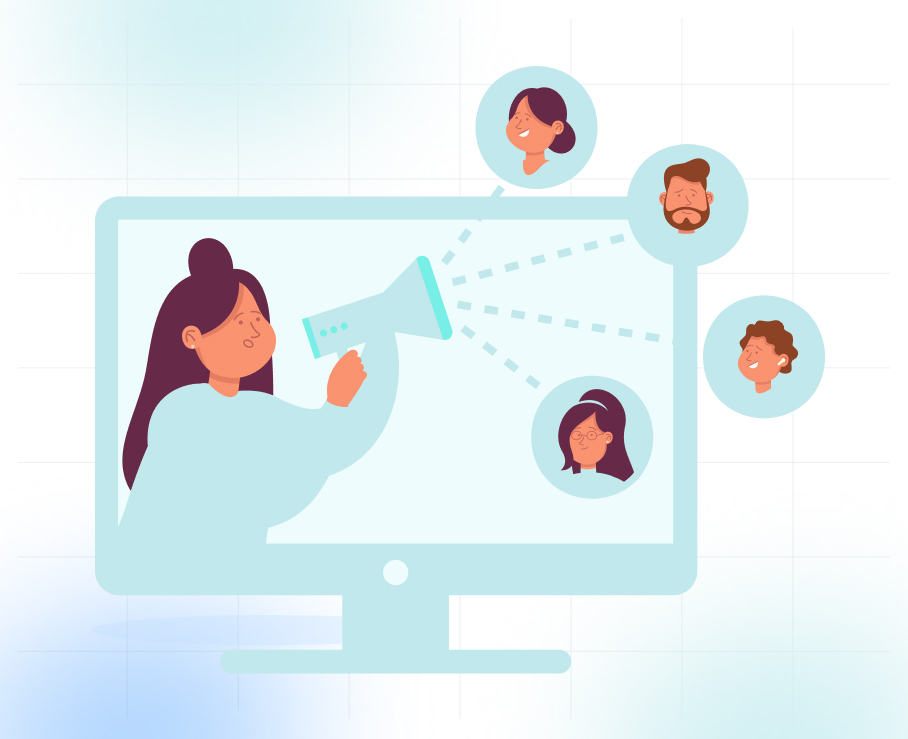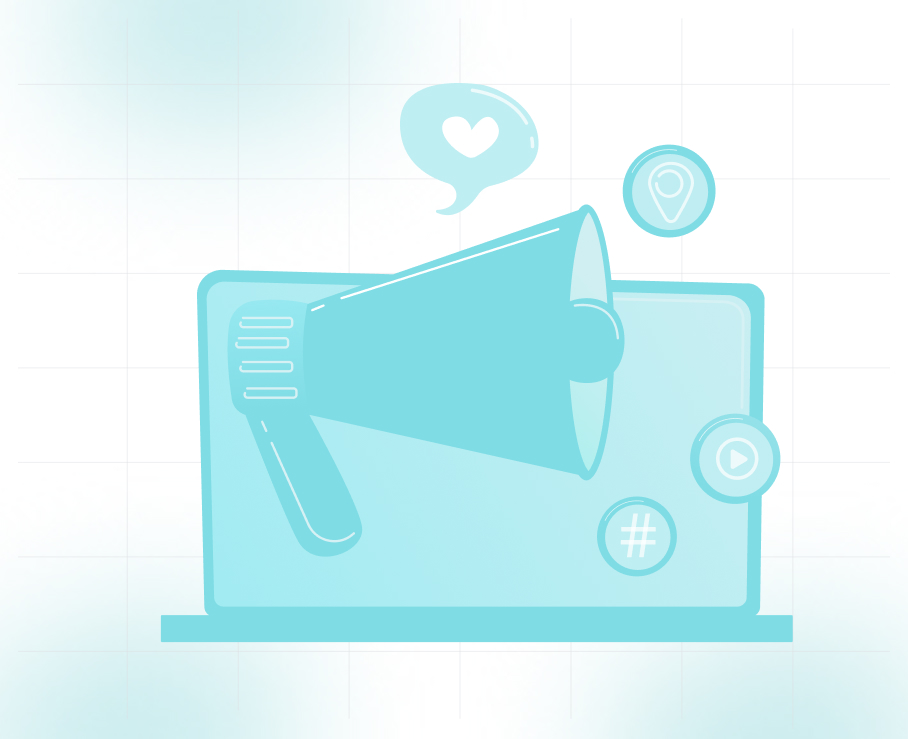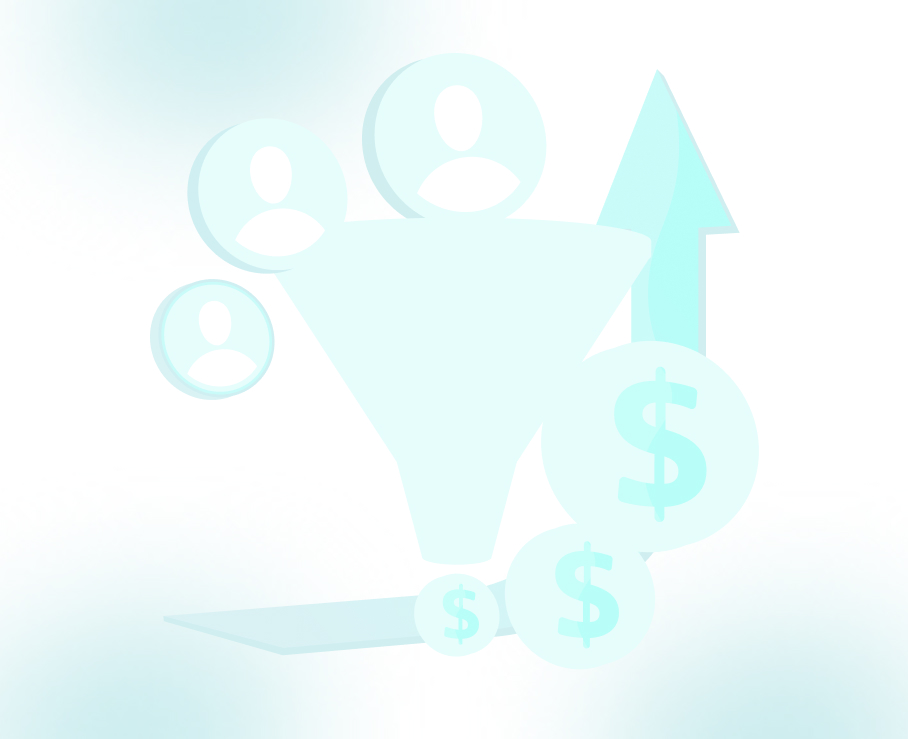
A Guide to Digitizing Your B2B Sales Process

In 2025, digitizing your B2B sales process isn’t just an option anymore! It has become a competitive necessity. With 90% of B2B customers researching 2-7 websites before making a purchase, the way B2B transactions happen is changing rapidly. Companies that aren't using digital tools are being left behind. For sales teams, this means more time spent on administrative tasks, missed opportunities, and, ultimately, slower growth.
This guide will walk you through the practical steps of digitizing your B2B sales, so you can start saving time, increasing customer satisfaction, and growing your business today.
Key Takeaways
- Buyers are more informed than ever: Over 90% of B2B buyers research multiple vendors online before reaching out. Your sales process must meet them where they are, digitally.
- Manual processes slow down growth: Traditional methods like cold calls, spreadsheets, and back-and-forth emails create friction. Digitization helps streamline and accelerate the sales cycle.
- Customer experience is now a differentiator: Buyers expect real-time updates, fast responses, and seamless purchasing journeys. Digital tools help you deliver this at scale.
- Data drives smarter sales decisions: From lead behavior to purchase history, digitization gives your team access to insights that fuel better targeting, messaging, and closing.
- Digital sales operations scale faster: When your systems are digital, it’s easier to expand into new markets, handle more customers, and grow revenue without proportionate headcount increases.
What is B2B Sales?
B2B sales involve one business selling products or services to another. It differs from B2C (business-to-consumer) sales, where transactions are often quicker and more emotional. In B2B, sales cycles are longer, more complex, and typically involve several decision-makers.
The key difference between B2B and B2C is the buyer’s mindset. In B2B, purchases are often driven by:
- Logic
- Business goals
- Value propositions
As a result, B2B transactions are typically more intricate and require personalized attention at each step of the process. Successful B2B sales require a deep knowledge of your client’s business, needs, and pain points. The longer sales cycle isn’t a flaw; it's a feature. After all, you’re not just selling a product; you're offering a solution to an ongoing business challenge.
Why Digitize Your B2B Sales?

Digitizing B2B sales isn’t just about keeping up with trends; it’s about addressing real business needs. Let’s break down why digitization makes sense:
1. Increased Efficiency and Time-Saving: B2B sales often involve countless manual, repetitive tasks like data entry, tracking leads, following up with prospects, and more. Automating them is the first step toward increased efficiency.
2. For example, using digital tools to manage customer relationships allows salespeople to spend less time entering data and more time selling. With everything in one place, they can quickly access key information, update progress, and keep the sales cycle moving forward without delays.
3. Improved Customer Experience: Digitizing your sales process allows you to deliver that experience consistently. Whether it's allowing customers to track their orders, check product availability, or get updates on their purchase status, digital tools provide the convenience customers expect.
4. Better Data Insights for Targeted Sales: When processes are digital, you have access to real-time data on everything from customer interactions to engagement patterns. This data can be analyzed to identify trends, anticipate needs, and personalize the sales approach. Understanding customer behavior allows your sales team to tailor pitches, identify cross-sell opportunities, and move prospects more quickly through the funnel.
5. Scalability and Market Reach: Scaling requires not only more sales but also the ability to handle more customers without increasing overhead. Digital tools and systems enable you to manage increasing customer demands efficiently. This scalability allows businesses to expand into new markets while maintaining a consistent customer experience.
Also Read: Know How Inside Sales Strategies Effectively Develops your Sales Pipeline
The Digital B2B Sales Process: A Step-by-Step Guide

Now that we know why digitizing your sales is crucial, let’s get into how you can actually implement it. Here's a step-by-step breakdown of the process:
Step 1: Develop a Deep Understanding of Offerings and Market Needs
Before diving into sales strategies, it's crucial that your team truly understands the core value of your product. This isn't just about listing features, but about understanding how your solution alleviates the specific problems your customers face. If you can't clearly explain how your product directly addresses their pain points, your messaging will fall flat. Take the time to gather feedback directly from existing clients and study market trends to stay aligned with customer needs.
Actionable tip: Conduct quarterly market reviews and customer interviews. This will help your team refine their understanding of the evolving needs of your target audience and ensure your messaging is always on point.
Step 2: Digital Prospecting and Lead Generation
Traditional cold calling is no longer as effective as it once was. To adapt, you need to engage potential customers through digital channels where they’re already active. Whether it’s publishing informative blog posts, engaging on LinkedIn, or using SEO to increase your visibility, digital prospecting allows you to identify and attract customers who are already looking for solutions. This is a much more efficient way to build your lead pool.
Actionable tip: Begin by creating targeted content that addresses common pain points within your industry. By providing value upfront, you’ll build trust with your audience.
Step 3: Qualifying and Researching Leads Digitally
Not every lead is worth your time, and the sooner you can filter out unqualified leads, the better. By using digital tools to track behavior, such as how a lead interacts with your website or which emails they open, you can gather valuable insights. This helps you score leads based on their level of interest and readiness to buy. For example, if a lead has downloaded several whitepapers and viewed your product demo, they are likely further along in the buyer’s journey.
Actionable tip: Use digital tools like automated lead scoring to prioritize high-value prospects. Look at engagement patterns and follow up with those who have interacted with your content the most, signaling higher interest.
Step 4: Pitching Digitally: Personalized Approaches
Whether it's through a personalized email, a tailored product demo, or a virtual meeting, digital tools allow you to engage in meaningful conversations that resonate with prospects. This customized approach shows that you understand their needs and are offering a solution specifically for them.
Actionable tip: Before scheduling an appointment, review the prospect’s previous interactions with your content. Use this information to tailor your pitch by highlighting the features of your product that solve their specific challenges.
Step 5: Handling Objections through Digital Communication
Objections are a natural part of the sales process, but how you handle them can make or break the deal. In a digital world, tools like live chat and automated email responses can help resolve concerns in real-time, reducing the time it takes to get an answer. Addressing concerns quickly prevents prospects from losing interest or turning to competitors. If a prospect questions the price, for instance, quickly address this objection with a comparison to competitors or highlight the ROI of your solution.
Actionable tip: Create an objection-handling playbook with email templates and responses for common concerns. This way, your sales team can quickly respond to queries with pre-approved, personalized answers.
Step 6: Closing Sales with Digital Tools
Digital tools like e-signatures and online payment processing make closing deals faster and more efficient. The days of waiting for a physical contract to be signed are gone. With just a few clicks, a lead can turn into a customer. This not only speeds up the closing process but also ensures there are no manual errors that might delay the deal.
Actionable tip: Set up automated reminders for follow-up actions once a lead expresses interest. Use e-signature tools for instant agreement finalization and automate invoice generation for a seamless closing experience.
Step 7: Post-Sale Relationship Management
Sales don’t end with the signature; they’re only the beginning of a long-term relationship. Maintaining engagement post-sale is key to retaining customers and increasing lifetime value. Using internal systems, you can track customer satisfaction, offer additional services, and provide updates about new product features.
Actionable tip: Schedule monthly check-ins with your customers via your customers. Use these check-ins to share relevant product updates, ask for feedback, and introduce upsell opportunities.
Also Read: 5 Proven Strategies to Convert Cold Leads into Sales Successfully
B2B Sales Funnel in the Digital Era

The B2B sales funnel has become more dynamic and customer-centric nowadays. Understanding this journey from the customer’s perspective is crucial for optimizing the sales process and meeting modern buyers where they are.
1. Awareness, Interest, and Consideration Stages
At the top of the funnel, the goal is to create awareness and generate interest. Digital content and ads are key to reaching your audience at the right time and in the right context.
By using content marketing, targeted social media campaigns, and paid ads, you can position your business as a solution to potential clients' problems. Buyers today often research solutions before contacting a sales representative, so your content must speak to their challenges and demonstrate how your offerings solve them.
2. Objection Handling and Decision-Making Process
As leads move through the funnel, they will inevitably raise objections. In the past, these objections may have led to lengthy back-and-forth emails or calls. But with digital tools, you can address these concerns quickly and efficiently.
Using digital platforms, such as automated emails or live chat, allows your sales team to handle objections promptly, providing the necessary information in real time. This helps keep the sales process moving smoothly and prevents potential deals from stalling due to unresolved issues.
3. Evaluation, Purchase, and Repurchase Decisions
Once a lead is convinced, it’s time for them to make a purchase decision. But the relationship doesn’t end here. After a sale, customers will evaluate the product or service to determine if it meets their needs. Managing post-purchase engagement is essential to ensure that customers are satisfied and to create opportunities for repurchase.
Tracking interactions through internal systems enables you to identify repurchase signals, such as a customer returning to your site or engaging with your content. This helps you stay in front of them with targeted offers and timely follow-ups, ensuring your business remains top of mind.
Also Read: Lead Generation: Proven Strategies and Expert Tips to Boost Your Sales
The right digital tools are essential for automating and streamlining your B2B sales process. Let’s explore the tools that can help your sales team be more efficient and effective.
- E-commerce Platforms and Digital Sales Channels: For B2B companies with products ready for online purchase, e-commerce platforms are crucial. These platforms manage everything from product listings to order fulfillment, ensuring a smooth digital sales experience.
- Product Information Management (PIM) Systems: With a PIM system, your team can easily update product details, specifications, and pricing, ensuring that customers always have access to the most up-to-date information. It allows for easier distribution of content, whether it's for a website, an e-commerce platform, or digital catalogs.
- Marketing and Sales Engagement Tools: Sales and marketing tools allow you to engage with leads and customers more effectively. By using digital tools to automate tasks like follow-up emails, lead nurturing, and content distribution, your sales team can focus on high-value activities.
These tools enable you to create personalized campaigns that speak directly to customer needs, increasing the chances of conversion and improving overall sales performance.
How TLM Helped a Canada-Based SaaS Company With Qualified B2B Leads
A Canada-based SaaS company, specializing in cash flow management for lenders, was looking to make a mark in a competitive industry. However, as a newcomer, they faced challenges in identifying qualified B2B leads while working with a limited budget. They partnered with TLM to address this issue and deliver a steady stream of leads.
Our approach began by understanding the critical role data would play. We assigned an experienced team member to conduct thorough market research and lead discovery. After finalizing the key titles for direct lender prospects, we crafted a creative, three-touchpoint campaign, using infographics to highlight the platform’s key features. The result? In just the first month, the client’s team received 4-5 demo appointments each week, and within four months, we delivered 15-20 qualified leads.
Boost B2B Sales with Targeted Email Marketing Strategies
We specialize in crafting B2B email marketing strategies that deliver measurable, long-term results. With years of experience, we’ve developed a proven approach to help businesses, particularly in SaaS and MSP sectors, fine-tune their email marketing for high-quality lead generation and increased conversions.
Our approach starts with Sales Qualified Leads (SQLs), where we generate leads that meet specific criteria to ensure only high-quality prospects are introduced into the sales funnel. We streamline Appointment Scheduling to allow your sales team to focus on closing deals. Our Demand Generation strategies create awareness and drive engagement, while Targeted Campaigning ensures we reach the most relevant audience. For high-value accounts, we implement Account-Based Marketing (ABM) to increase engagement and conversion rates.
With a data-driven mindset and a focus on efficiency, we turn email marketing into a powerful tool for lead generation and business growth, empowering you to build lasting relationships with your prospects and clients.
FAQs
1. Will AI replace B2B sales?
No, AI assists with tasks but can’t replace the human touch required for reading emotions, building trust, and adapting in real time during B2B sales.
2. What are the 4Ps of B2B marketing?
The 4Ps—Product, Price, Place, and Promotion—are key strategies for achieving business goals and maximizing market share in B2B marketing.
3. What are the 3Cs of B2B?
The 3Cs—Customers, Competitors, and Corporation—form the foundation for creating a successful business strategy by balancing these three elements effectively.
4. What is the future of B2B marketing?
B2B marketing is shifting towards machine-driven processes, with global e-commerce expected to grow by 17.5% annually until 2027.
5. What is hybrid selling?
Hybrid selling combines digital and in-person techniques, allowing sales professionals to engage customers through their preferred channels, whether digital or face-to-face.






